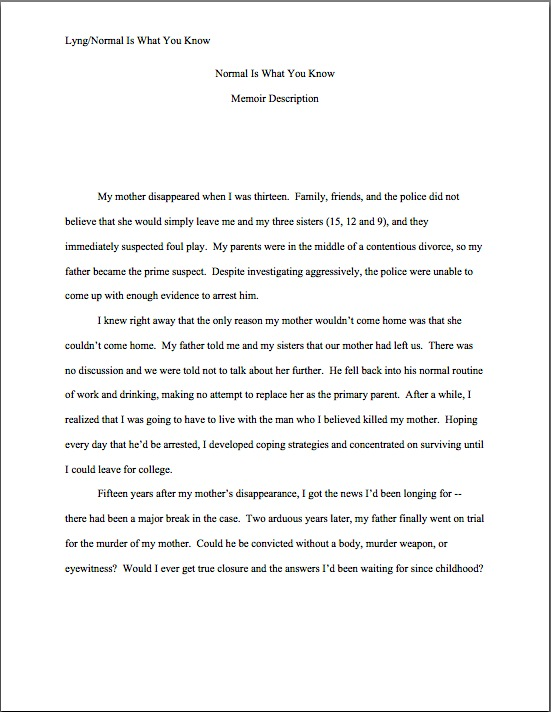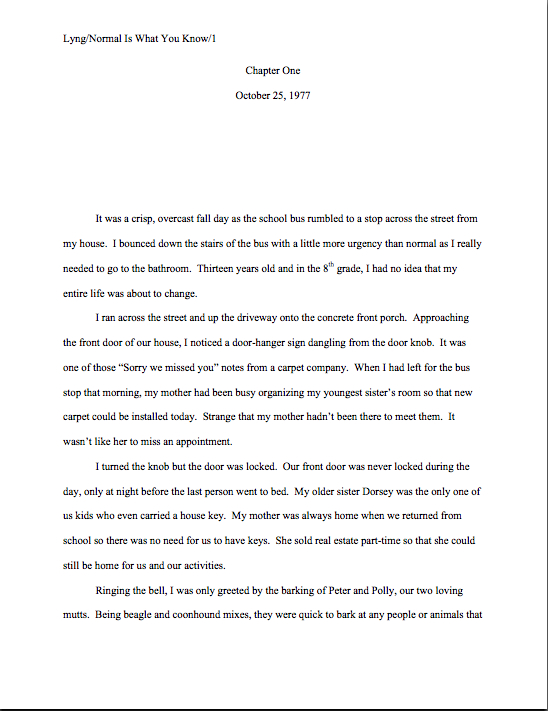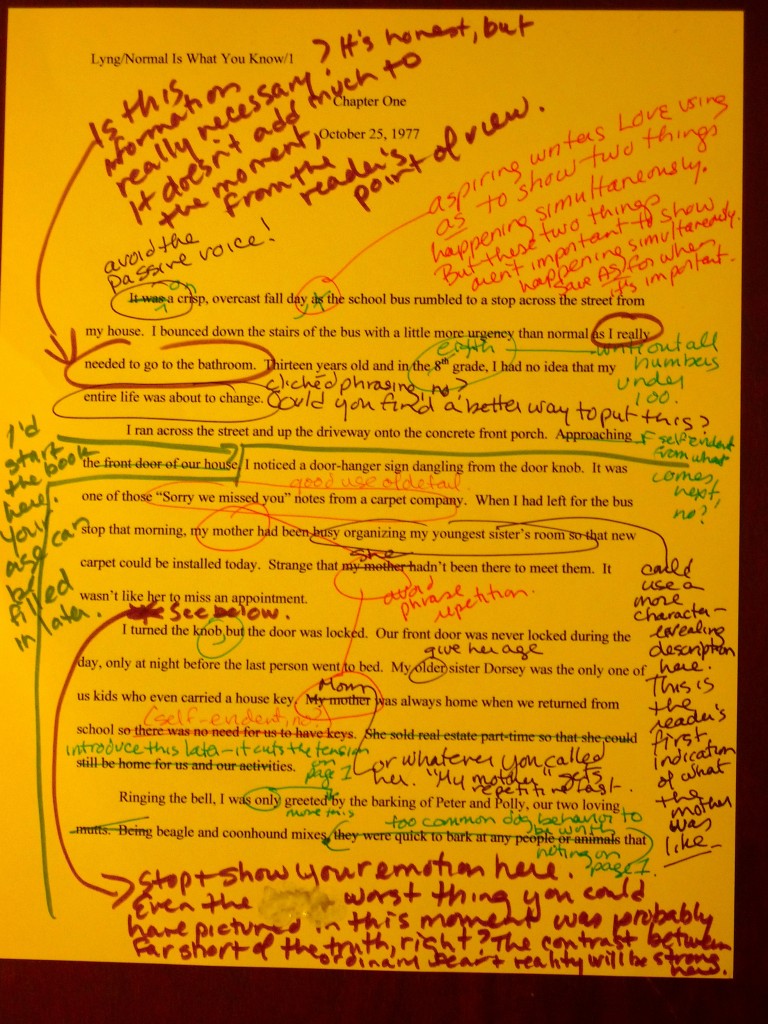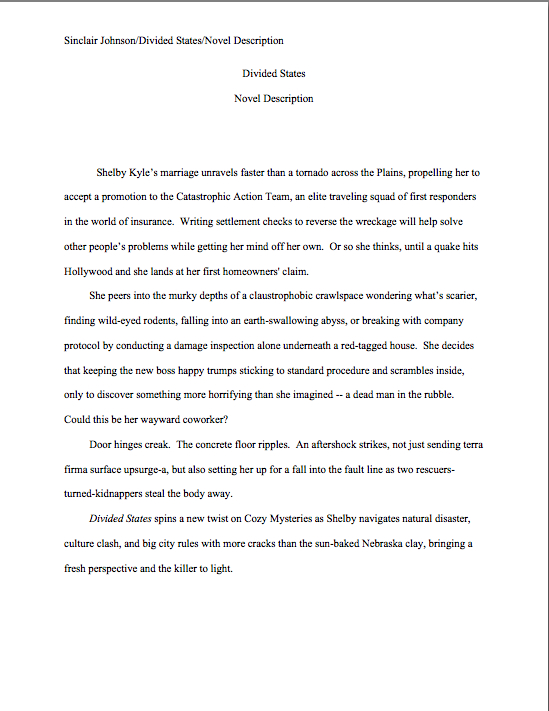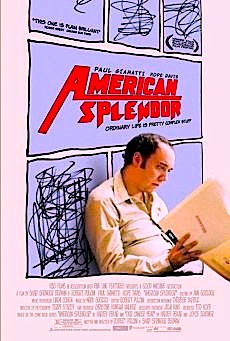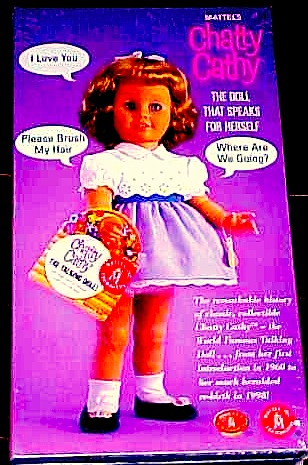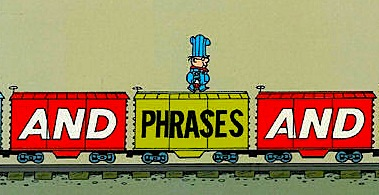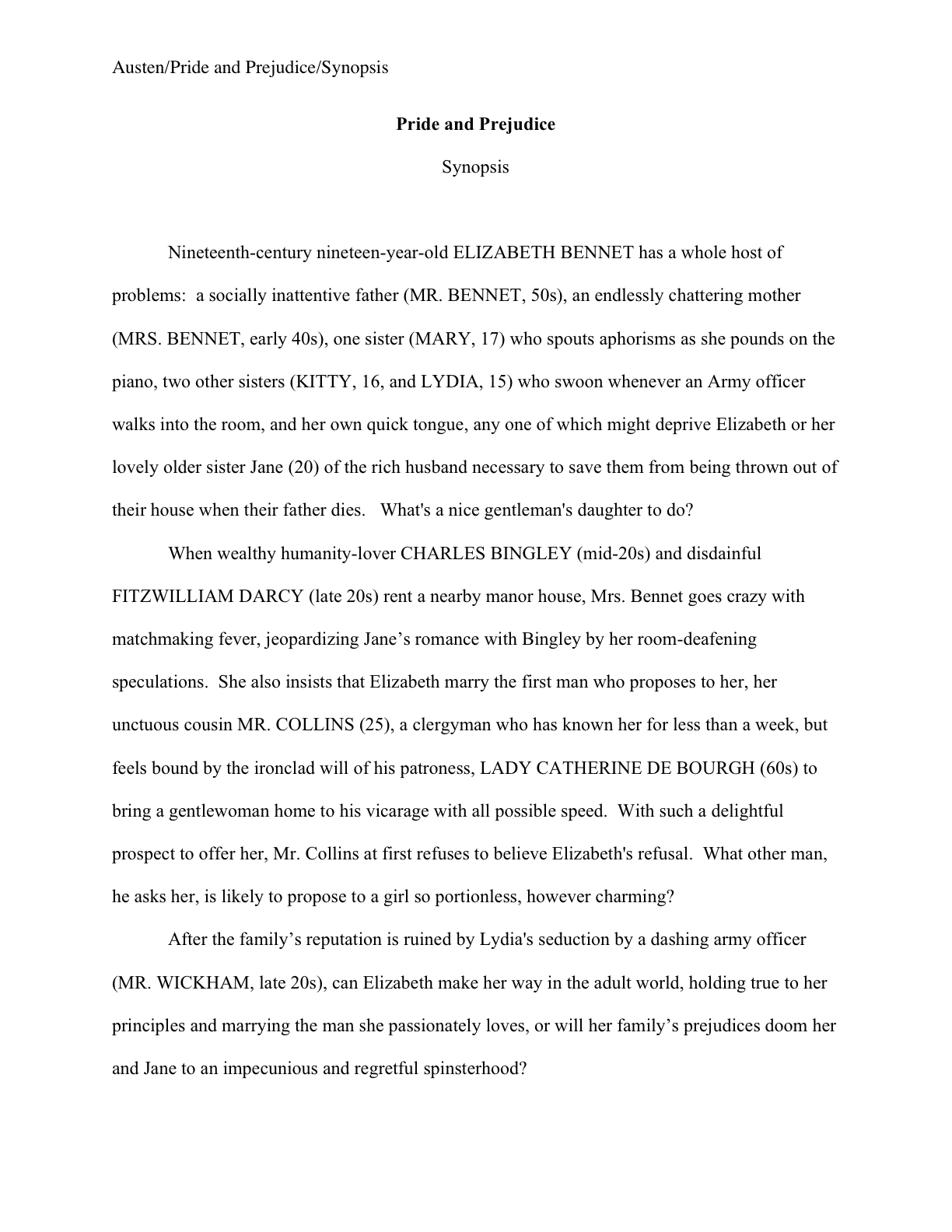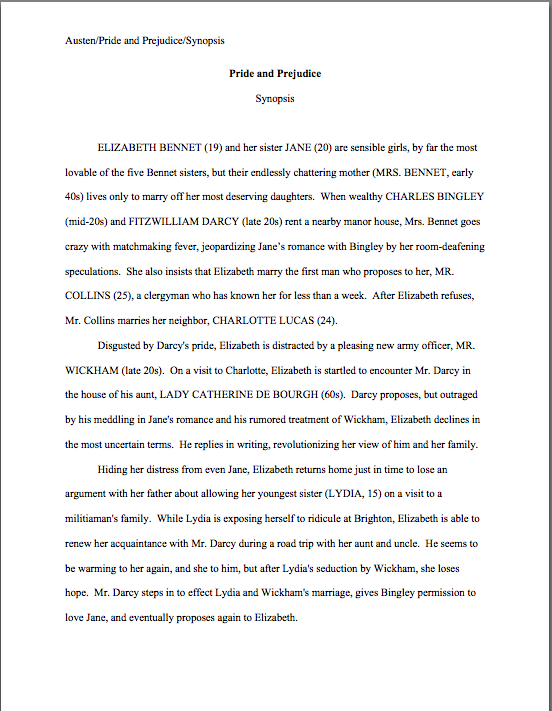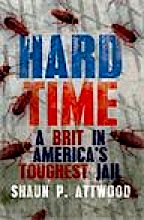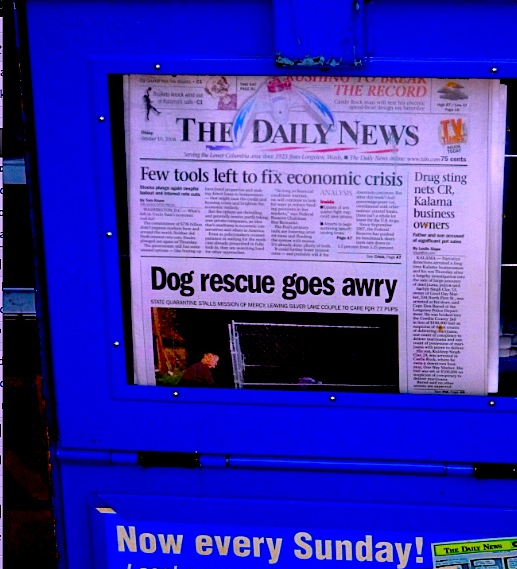
Before I launch into this evening’s installment of our ongoing series on the ins and outs of querying, I have a question for all of you: would you be interested in my running a Synopsispalooza sometime soon? Followed, perhaps, by an Authorbiopalooza, a Marketingplanpalooza, and/or a Howtofindagentstoquerypalooza? Or my personal favorite, Howtogetgoodfeedbackwithoutoffendingyourmomandotherkithandkinwhowanttoread(deep breath)yourmanuscriptpalooza?
If enough readers are up for any or all of these, I’d be happy to oblige, although as always, I’m eager to get back to craft issues. Admittedly, there are already how-to posts for these important processes on the archive list, but I haven’t gone over any of them in a while. Market conditions change over time; so do literary tastes and trends. And as those of you who have been through a querying series with me in the past have no doubt noticed, I tend add quite a bit of new material every time I revisit a topic.
So no, in answer to what newer readers’ minds just shouted, the stuffed-to-the-gills nature of my Querypalooza posts is actually not all that unusual here at Author! Author! I’m all about thoroughness, and I get genuinely excited about this stuff.
Do think about the synopses, author bios, etc., and let me know. No great rush: after Querypalooza ends on Sunday (I think; it may spill over a trifle into next week, depending upon how example-happy I get this weekend), I shall be devoting a bit of time to the close textual analysis of the winning entries in the Author! Author!/WHISPER Great First Page Made Even Better Contest contest that we began going over with the proverbial fine-toothed comb in early September. It will be a good segue out of these intensely marketing-oriented ten days, marrying considerations of craft with yet more consideration of how to catch Millicent the agency screener’s elusive attention in a positive manner.
Or, to put it in practical terms: if you are at all interested in learning how a pro reads a first page — you know, the single page an agency is most likely to allow queriers to attach to their queries, as well as the first thing Millie will see in your submission — make sure to tune in.
But first, a little more on the theme of catch Millicent’s elusive attention in a positive manner.. Last spring, during a spirited discussion of Point-of-View Nazis and their narrative-limiting ways, reader AM made a great suggestion:
Now what we need is your take on writing a query letter for a multiple POV novel. Or maybe I just need to find an attractive combination of money and chocolate bribe to get your input on mine. Hmm.
Now that’s a polite way to grab someone’s attention. If I can wade my way through this roomful of bundled dollar bills and baskets of truffles, I’ll get right onto AM’s perfectly reasonable request.
Just kidding. I don’t like chocolate all that much.
And while we’re on the subject of blandishment: no matter how much you want to grab Millicent’s attention, never, ever, EVER include a bribe of any sort in a query or submission packet. It will not garner positive attention for your book project; in fact, it is virtually always an instant-rejection offense.
Yes, even if it’s merely a photograph or two of the gorgeous scenery you have written about in your travel memoir or that business card you had made up for your last foray to a writers’ conference. Agencies have to be extremely defensive about this one: due to how fast rumors about the latest querying trick spread around the Internet, if even a single Millicent accepted a single box of fudge from an aspiring cookbook writer, half the agencies in the country would find themselves up to the top of their cubicles in bribery-aimed cookies, helium balloons, and fruit baskets. Not to mention something most agents have a horror story about already, videotapes of aspiring authors giving speeches about their books.
So what is the best plan for stuffing that query packet to get your work noticed positively? Checking the website and/or agency guide listing for each and every agent you plan to query, making sure that you are sending precisely what they expect queriers to send — no more, no less — topping it with a professional, well-crafted query letter, and mailing it off with a SASE. Or going through exactly those steps for an e-mailed query.
Given that most agencies with websites are pretty explicit about what they do and don’t want aspiring writers to send them, you would expect that query packets that conform to their various standards — because, lest we forget, every agency is looking for something slightly different — but actually, every Millicent I have ever asked about it (and believe me, I ask as many as I can) complains about how often her agency receives query packets with extras.
Or — sacre bleu! — with elements missing.
The only message such query packets are actually sending to the Millicents who open them is hey, look: here’s a writer who can’t follow straightforward directions! Or possibly, depending upon the clarity of the agency’s guidelines, wow, here’s a writer who doesn’t read very well. (More common than any of us would like to think, alas.) Or, the most likely of all, oh, no, here’s another writer who didn’t bother to do his homework; we went to all the trouble of telling potential queriers what we wanted, yet this guy just assumed that every agency was identical.
All sentiments our Millie is prone to sum up tersely elegantly as: “Next!”
So what, out of all of the possibilities a writer’s active imagination could conceive and all of the suggestions for querying techniques flying around out there in the ether, is the bare minimum that MUST be in a query packet? So let’s recap the basic elements that any agent would expect to see:
*1. The book’s title
2. The book’s category, expressed in existing category terms
3. A brief statement about why you are approaching this particular agent
4. A descriptive paragraph or two, giving a compelling foretaste of the premise, plot, and/or argument of the book.
5. An EXTREMELY brief closing paragraph thanking the agent for considering the project.
6. A SASE, if querying by mail.
That’s it, right? If you don’t include all of those, your query letter cannot succeed. Two other highly advisable, but not strictly speaking required, elements include:
7. A BRIEF marketing paragraph explaining for whom you have written this book and why this book might appeal to that demographic in a way that no other book currently on the market does. (Optional for fiction, but I would strongly recommend either including it or replacing it with #8.)
8. A platform paragraph giving your writing credentials and/or expertise that renders you the ideal person to have written this book. (Also optional for fiction, and can be replaced with #7; it’s niftier, however, if you can manage to include both, even for novels.)
Is everyone comfortable wrangling all of those elements? (Now is the time to speak up, if not.) When all of these elements are pulled together into a smoothly-worded piece of correspondence, it reads like this:
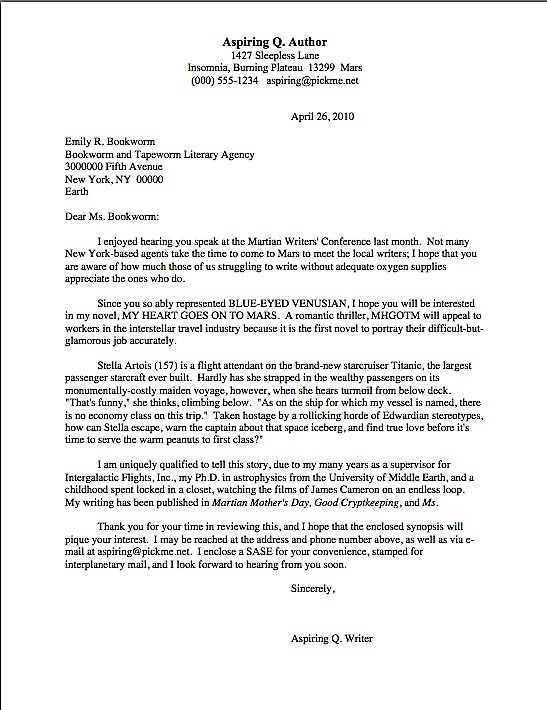
Now that we’re thinking in terms of constituent parts vs. whole, we can see that what AM is asking about is not the entire query letter — she couldn’t be, since elements 1, 2, and 5-7 are not concerned with plot or narrative, right? #3 could be, but only if the agent had a track record of representing multiple-narrator books. (In that case, Since you so ably represented STORY IN FIFTEEN VOICES, I hope you will be interested in my multiple-narrator novel… would be perfectly acceptable.)
You look so cute with your eyes bugged out like a cartoon character’s. “What do you mean, Anne?” flabbergasted would-be queriers everywhere exclaim. “How is it possible that something as important as the narrative structure of the book could affect only a single paragraph of the query? Isn’t the voice choice the single most important thing to know about a multiple-narrator story — or a first-personal narrative, for that matter? Or, if it’s not the most important, isn’t it at least the most interesting?”
From a professional point of view, the answer to those last two questions is very short: no. And the answer to the second, the one about why the narrative choice shouldn’t spill over to the rest of the query is also pretty brief: because how a writer has chosen to tell the story in the book is not a required element in the query.
You don’t see it on the list above, do you?
Unless an agency’s guidelines specifically ask for it, leave it out, or as we’ve already discussed, you’ll run the risk of producing a query that reads more like a book report than, well, a query. Remember, the query is not expected to provide analysis or review of the manuscript it is pushing: it’s supposed to tell Millicent the story.
Let’s face it: telling her how many protagonists there are, or whether the narrative talks about their experiences in the first or third person, actually doesn’t give her much of an indication of what the book is about, right? So is it really the best use of scant querying space?
In case you’re waffling on that last question, here’s a peek at what the result might be if a writer’s answer were yes. (If you are having trouble reading the individual words, try holding down the COMMAND key and pressing +.)
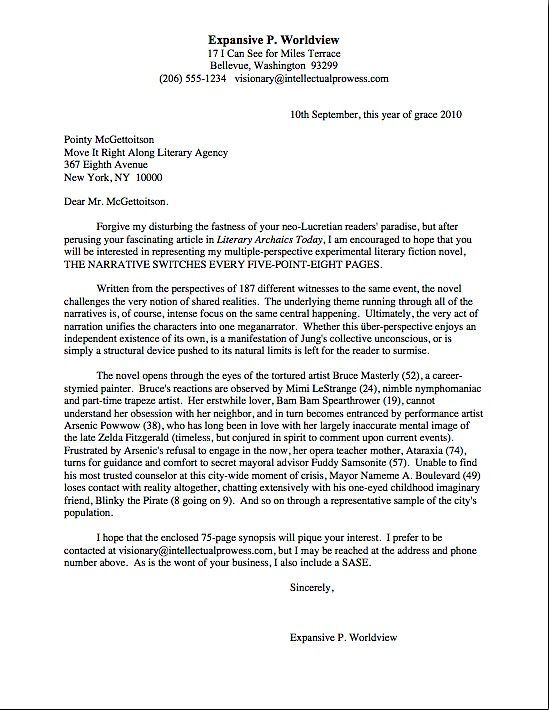
Quick: what is this book about? What is the event that all of these narrators observed, and what about it is compelling enough to hold the reader’s interest through 187 changes of perspective?
Beats me. So how can it be an effective query letter? Especially when — and give yourself some extra Brownie points if you caught this — Expansive made the classic Millicent-baiting mistake of referring to his work by the redundant phrase literary fiction novel. (All novels are fiction, right?) Besides, everyone knows that ol’ Pointy is a woman, and thus should be addressed as Ms. McGettoitson.
Equally damning, all of that analysis of structures and themes is going to read like a book report to Millicent. (That’s even the industry’s term for this kind of query, pitch, or synopsis: high school book report.) In a query, you’ve got one or at most two paragraphs to convince Millicent that this is a story she should read. Talking about a novel’s structure is almost never the best means of doing that.
So how would I advise Expansive to go about revising this query? Well, for starters, I would encourage him not to name so many characters in his descriptive paragraph (pop quiz: without looking, how many can you name? That’s the maximum he should keep), concentrating on the overall story of the novel, rather than enumerating as many perspectives as he can in that short a space. Second, I would urge him to make that first paragraph a touch less off-puttingly pretentious in its phrasing.
Third, I would advise him to throw out the second paragraph altogether. Period.
And every multiple-perspective lover’s hand shoots into the air. “But Anne, the first thing almost any aspiring writer will say if asked to describe his multiple-perspective novel, or even first-person narrative, is something like, ‘Well, there are eight points of view.’ Are you seriously suggesting that he should suppress that information in his query?”
Personally, I would let it be a pleasant surprise at manuscript-perusal time. Few professional readers would consider the narrative voice choice the most important thing to know about a book, after all. As anyone who has ever read fiction manuscripts for a living would be only too glad to tell you, there are excellent multiple-perspective novels; there are lousy ones, and there are a million different gradations in between.
Ditto with every other perspective choice. At query time, it’s just not a significant issue; it doesn’t give Millicent much of a hint about why her boss might conceivably be interested in this book. It’s not as though agents are very much given to strolling into the office first thing in the morning, yawning, and saying wistfully, “You know what I’d really like to read today? A first-person narrative. Yep, that would really hit the spot. Got any of those on hand, Millie?”
Not going to happen. If the narrative choice works on the page, great, but the only way Millicent can possibly tell if it does is to — wait for it — read the manuscript. Which, by definition, she’s not going to be doing at the querying stage.
So why not let your exciting perspective choices be a pleasant surprise at submission time? Concentrate instead in the query on getting her to ask to see the manuscript.
Which leads us right back to AM’s query-editing problem, doesn’t it? She’s in luck: the only part of a query letter that could possibly require a multiple-protagonist novel to be handled differently from a single-protagonist one would be #4, that pesky descriptive paragraph where the aspiring writer attempts to give some indication of what the book is about.
Paragraph #4 on our must-have list, in other words.
There’s a reason that lovers of multiple-protagonist stories find constructing the descriptive paragraph frustrating, and a darned good one. Let’s face it: that’s not a lot of space to talk about a perfectly straightforward boy-meets-girl story, let alone one following five protagonists, seventeen subplots, and fourteen generations of bunnies on an epic trek across four continents.
So I’ve got a radical suggestion: don’t try.
I’m quite serious about this. Instead of attempting to force a super-complicated plot into the space of a scant paragraph, just show enough of the premise to intrigue Millicent into asking to see the manuscript.
Which is, after all, the actual goal of any query, right? Right? Hello?
If you didn’t respond immediately in the affirmative, you’re not alone. Many writer new to the game assume, wrongly, that if only their query is good enough, an agent is going to say yes on the spot to representing the book. Since that literally never happens — no agent in his right mind would agree to represent a manuscript or book proposal she hasn’t read, unless it was written by someone who is already a celebrity in another field of endeavor — the assumption that it should renders the hard process of coming up with that descriptive paragraph even harder. The sooner an aspiring writer can jettison it, the better.
Is that dangerous notion out of your system? Excellent. Embrace this far more workable principle instead: the point of the descriptive paragraph in the pitch is NOT to distill the essence of the book; it is to convince the agent or editor to ask to READ it. Thus, your job is not to summarize the plot, but to present it in a fascinating manner.
Again, this is a tall order, even for a novel focusing on a single protagonist. Within the space of a paragraph, it’s genuinely difficult to make someone sound like an interesting character in an interesting situation. Generally speaking, your best bet is to focus on what’s most unusual about the protagonist and/or the situation.
Don’t believe me? Okay, if you read as many queries as Millicent, which would intrigue you more:
an accountant confronted with an ethical dilemma , or
a goose-loving accountant forced to decide between betraying his parfait-scarfing boss and being kidnapped by a mob of crazed azalea gardeners?
One’s generic; one’s fresh. And the second one is far, far less likely to make Millicent roll her bloodshot eyes and mutter, “Oh, God, not another accountant-in-a-dilemma story. Just once, I’d like to see one of ‘em do the wrong thing.”
Okay, okay: so that’s a pretty jaded response. Also, the second presentation’s details are a little weird. But it caught your attention, didn’t it?
Those of you writing about multiple protagonists are scratching your pretty little heads right about now, aren’t you? “But Anne,” these sterling souls inquire politely, because they know that’s the best way to get me to answer. “That sounds like great advice, but how does that apply to my novel? All seven of my protagonists are interesting people in interesting situations, but there just isn’t room in a 1-page query letter to introduce them all that way. Help!”
Superlative question, head-scratchers. In theory, a good multiple-protagonist novel is the story of LOTS of interesting people in LOTS of interesting situations.
That can make a great read, but it definitely presents a space-usage problem in a query letter. Take, for example, what the descriptive paragraph of John Steinbeck’s East of Eden would look like if Uncle John were (a) querying it today, (b) not already famous by the time he wrote it, and (c) he didn’t already know that the manuscript’s first 10 pages being almost exclusively concerned with the soil conditions of the Salinas Valley would probably lose Millicent pretty quickly:
Adam Trask and his brother Charles have a problem — and not just that their father has built a career on lying about his experiences in the Civil War.
Allow me to pause there for a moment: the story’s grabbed you already, hasn’t he? See what I mean about the hook value of unusual details?
But let’s assume for the purposes of argument that Millicent hasn’t already e-mailed him and asked to see the manuscript without reading the rest of the letter. (Hey, she’s busy; she already knows she wants to read it.) See how the energy fades as the description piles on more and more protagonists:
Adam Trask and his brother Charles have a problem — and not just that their father has built a career on lying about his experiences in the Civil War. For reasons Adam is powerless to explain, insensate rage overcomes Charles anytime their overbearing father shows so much as a flicker of preference for his brother. Sent off to the Indian Wars against his will, Adam loathes killing the innocent; Charles, deserted at home, farms and longs for his brother’s return. Meanwhile, wee sociopath Cathy Ames blithely leads young men to their doom in her home town. After a young teacher kills himself for her sake, her parents attempt to curb her — such a pity that they underestimate Cathy’s familiarity with kerosene. Out in California, Samuel, a family patriarch who bears a suspicious resemblance to the author, proves himself incapable of making money, but is the most respected advice-giver in the whole Salinas Valley. Samuel is the first to notice that Lee, Adam and Cathy’s hired hand, loses his pidgin accent as soon as anyone speaks to him intelligently. After Cathy unwillingly gives birth to twins Cal and Aron, she flees to Faye’s house of ill repute. Trusting Faye comes to love Cathy — now calling herself Kate — like a daughter, unaware of how the young woman has historically treated her relatives. The Sheriff of Monterey County worries about Kate and Adam, but can do little as she builds her business. As the Trask boys grow, secure in Lee’s love and Adam’s depressed indifference, three of Samuel’s children have their own individual adventures. Abra, a beautiful young girl visiting the Trasks with her parents, is charmed by eleven-year-old Aron’s beauty, but repelled by Cal’s rudeness.
That’s not the plot, mind you — that’s just a basic list of the protagonists and their initial conflicts. And I haven’t gotten to the part where the James Dean film version of the book began. Even starting 2/3rds of the way into the book, to make the story fit within the film’s running time, it completely got rid of Lee and transformed Abra into a love-crazed simp.
That’s a pity, because it honestly is a marvelous book — one that any serious novelist interested in handling multiple protagonists might want to read, incidentally. Steinbeck was incredibly skilled at weaving perspectives together into a solid, real-feeling world.
Clearly, though, no matter how wonderful the novel, focusing upon all of the protagonists isn’t going to work in the query letter. What other alternatives would Uncle John have?
What many writers would choose to do in Uncle John’s place would be simply to select one protagonist and present that character as if he were the only protagonist. This can work wonders, in terms of simplifying the story for querying purposes. Take a gander:
Adam Trask has a problem — and not just that his father has built a career on lying about his experiences in the Civil War. For reasons Adam is powerless to explain, his brother Charles is overcome with insensate rage anytime their overbearing father shows so much as a flicker of preference for his brother. When a mysterious battered beauty arrives bleeding on their doorstep, Adam abruptly decides to pursue his dream: move across the country with a woman he barely knows to create his own garden of Eden in the most beautiful place he has ever seen. But is his lovely new wife a craftier version of Charles, only too eager to wreck his hard-won paradise?
Gets right to the point, doesn’t it? Here, Adam’s an interesting character from an interesting family, faced with interesting conflicts.
As a bonus, the description even tells Millie how he intends to overcome those conflicts and move toward what he wants. (And did you like how I worked in the word dream? Millicent loves seeing that word in a descriptive paragraph. Other faves: passion, desire, longing, want, love, happiness.)
It does not, however, give a particularly complete sense of the book, does it? Partially, that’s a function of focusing on the premise — as is often the case, restricting the description to merely the set-up means that the query letter virtually ignores two-thirds of the book. (And not the two-thirds ignored by the movie version.)
That’s not a bad strategy for a query, by the way. Borrow a page from Scheherazade’s book: don’t tell too much of the story; leave Millicent curious to hear more.
But is concentrating upon only one of several protagonists the only way to produce a query for a complex multi-protagonist novel? Not by a long shot. Here’s an even better suggestion: introduce the story of the book in the descriptive paragraph, not the stories of the various characters.
Why, that’s the advice I gave Expansive, wasn’t it? Allow me to elaborate.
For a novel with multiple protagonists to draw the reader along from storyline to storyline, it must necessarily have an underlying unitary narrative. (Unless the chapters and sections are a collection of unrelated short stories — which would make it a short story collection, not a novel, and it should be queried as such.) Even if it is told from the point of views of many, many people, there is pretty much always some point of commonality.
That area of commonality should be the focus of your descriptive paragraph, not how many characters’ perspectives it takes to tell it. Strip the story to its basic elements, and describe that in Paragraph 4.
Those of you juggling many protagonists just sighed deeply, didn’t you? “But Anne,” lovers of group dynamics everywhere protest, “why should I limit myself to the simplest storyline? Doesn’t that misrepresent my book?”
Not more than other omissions geared toward brevity — you would not, for instance, take up valuable query space with telling an agent that your book was written in the past tense, would you? Or in third person?
The point of the query is not to talk about the novel, as you would if you were reviewing it or analyzing it for a class; you’re there to interest Millie in the story.
So tell the story. Let your narrative choices be a fringe benefit discovered at manuscript-reading time, Expansive.
Before anyone steps up onto that nearby soapbox to inform me huffily that in a good novel, the writing is the story — a statement with which I happen to agree, by the way — let me give you another example of why concentrating on the narrative structure seldom sells a story well. I’m certain the wandering spirit of Uncle John will forgive me if I use his story again as an example:
EAST OF EDEN is a multiple-protagonist novel covering three generations of the Trask family, as well as three generations of the author’s own family history. Told from the competing and sometimes factually inconsistent points of view of both fathers and sons, as well as the lover, wife, mother, and madam who alternately rules and destroys their dreams, this sweeping epic tells three different versions of the Biblical story of Cain and Abel — and the bystanders who see the tragedy reenacted again and again. Through the eyes of Lee and Samuel, the less-privileged characters supporting Adam and his sons, the reader gains a clear if limited picture of the casual racism, conflicting cultural values, and philosophies of the period.
That’s analysis, not description. It might get you an A on an American Literature exam, but the publishing industry just doesn’t talk about novels in academic terms. Tell Millicent a compelling story instead.
Has a high wind risen on the horizon, or have some of you been indulging in gusty sighs for the past few paragraphs? “Okay, Anne,” Expansive and his ilk concede reluctantly, “I plan to use the descriptive paragraph to show off my skills as a storyteller, rather than getting bogged down in a general discussion of the structure. But I write character-driven fiction — my story is my characters!”
Pardon me for doubting you, oh sighers, but in a well-told narrative, that’s almost never true. Even memoirs are seldom solely about their protagonists and nothing else. Protagonists live within contexts; they face obstacles to pursuing their goals; they encounter conflict. If they don’t, it’s hard to envision much of a dramatic arc.
Even in the extremely unlikely event that your book is such pure literary fiction that the characters and plot are irrelevant — again, almost unheard-of — concentrating instead upon experiments in writing style, your book is still about something, isn’t it? The interactions between the protagonists? Their hopes and dreams? The way that plain white wall changes in the light over 400 pages of the protagonists’ staring at it and nothing else?
That something can be the focus of your descriptive paragraph. Why? Because just as any agent is going to have to know what the book is about in order to interest an editor in it, Millicent’s going to have to be able to tell her boss what kind of novel she thinks the agency should consider representing.
Wait, what’s that you say? You’d like to see just how I’d follow this last piece of advice for Uncle John’s notoriously plot-heavy 600-page novel?
I was afraid you’d ask that. Frankly, if I were querying EAST OF EDEN to most agencies, I’d probably use the Adam-centric descriptive paragraph above; it’s a pretty good teaser for the first part of the novel. However, if I were approaching an agent who specialized in lengthy, character-driven epics written in a literary voice, I might try a more theme-oriented approach. For this book, I’d concentrate on the great big conflicts, opening with a wacky, memorable detail:
Invalided half an hour into his Civil War service, Cyrus Trask builds a career on lying about his many battles. He raises his sons, Adam and Charles, as miniature soldiers, but by the time they come of age, volatile Charles is too violent for even the Indian Wars. Forced to shoot at innocents against his will, meek Adam vows to use the rest of his life to create, not destroy. When mysterious beauty Cathy arrives at the Trask farm, nearly beaten to death, Adam abruptly decides to abandon his family to pursue his dream: move across the country with a woman he barely knows to create his own garden of Eden in the most beautiful place he has ever seen. But crafty Cathy longs to escape his hard-won paradise and carve out a safe haven for herself as madam, even if she must murder those who stand in her way. Left to raise his twin sons with only the help of Lee, his quietly scholarly housekeeper, can Adam avoid passing his legacy of violence down to yet another generation?
The answer to that question is, as any American literature major could tell you, is no. But there’s no need to tip Millicent off before she requests to read the manuscript, is there?
More practical examples follow next time, of course — 10 am PST, according to our schedule, although I reserve the right to hit the snooze button a couple of times tomorrow morning. Enjoy your evenings, campers, and keep up the good work!

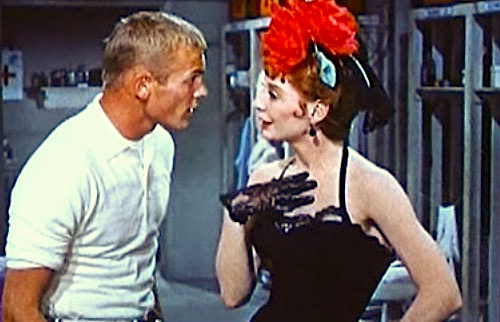

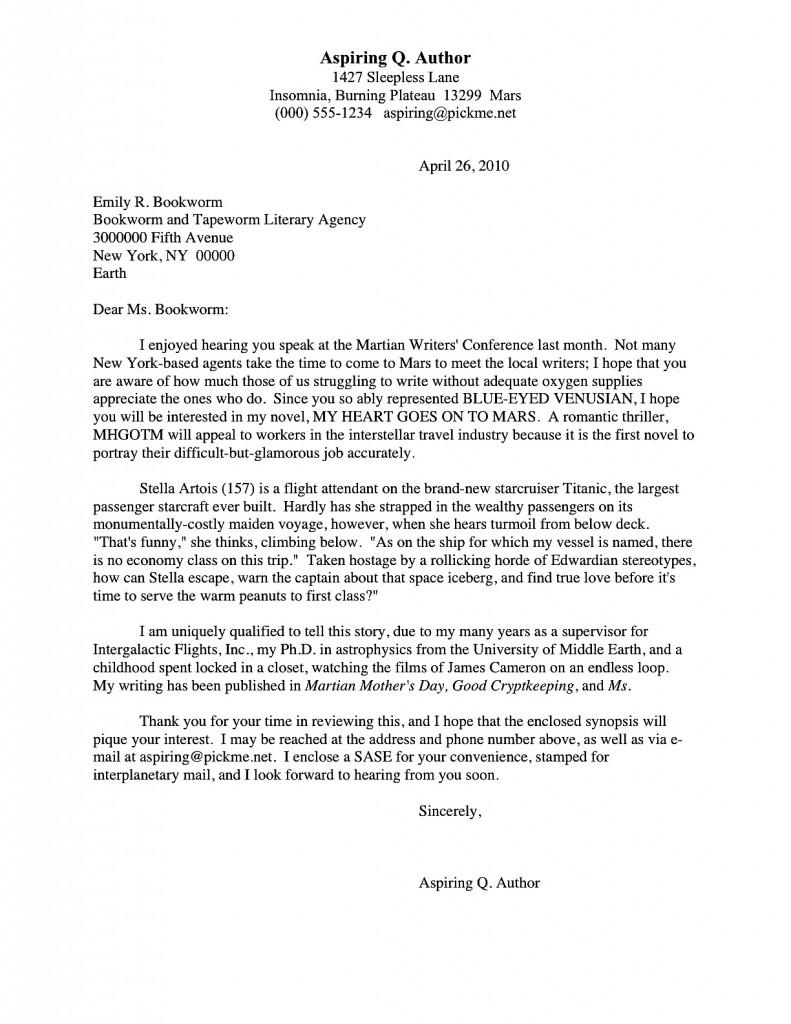

 If there is a single rule of thumb that may be applied at every stage of any successful author’s career, it’s that it ALWAYS behooves us to look critically at our own writing, rather than assuming that the only possible explanation for frowned-upon writing lies in the eye of the predisposition of the reader to frown.
If there is a single rule of thumb that may be applied at every stage of any successful author’s career, it’s that it ALWAYS behooves us to look critically at our own writing, rather than assuming that the only possible explanation for frowned-upon writing lies in the eye of the predisposition of the reader to frown.

